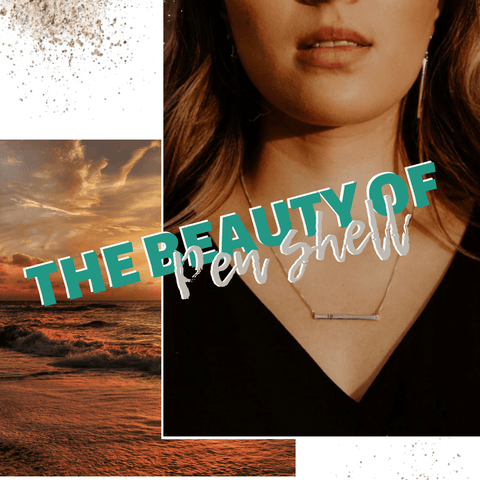The beauty of pen shell
Pen shell has a long history with Native American artists who have used the shell for a wide variety of types of jewelry. These days, however, the beautiful shell which has long been a traditional part of Native jewelry, faces some challenges thanks to environmental changes.

Pen shell, also known as fan mussel, is a bivalve mollusk with a shell-shaped somewhat like a quill pen, hence the name. It is a species of clam originally found in the Mediterranean. Today it can also be found in other areas, with much pen shell being imported from the Philippines. In size, the shell ranges from a foot long to up to four feet long. The mollusks live buried in mud and sand at depths of one to two feet.
Pen shell mollusks attach themselves to rocks with fibers, often called sea silk, which are secreted from what is called its byssus gland. The fibers are made of proteins such as keratin and can be over two inches long. The color varies, but the shells with a dark gold milkiness are the most favored for jewelry.
Easy to work with, pen shell has been used to make traditional earrings and adornment for powwow dancers. The shell is thin enough to make a pleasant tinkling sound when the dancers move. Pen shell is also popular with heishi artists because of that same ease with which it can be worked. Another reason for its popularity is that the shell is more affordable than others.

But, like many other marine animals, the pen shell is facing the challenge of living in waters that are no longer as pristine, nor as nurturing as before. Tenorio notes that the pen shell she gets today is not of as high a quality as before. The color is less brilliant, and the shells are getting smaller and thinner.
The fact is pen shell is fast becoming threatened with extinction. Pollution is killing off not only the adult mollusks but the eggs and the larvae too. Some are killed as a side consequence of trawling and overfishing also hurts their chances of survival as a species. In the Mediterranean, pen shell has been listed as an endangered species, and capturing them is now illegal there. The future may not see as much pen shell used in jewelry if efforts to save the species fail.









